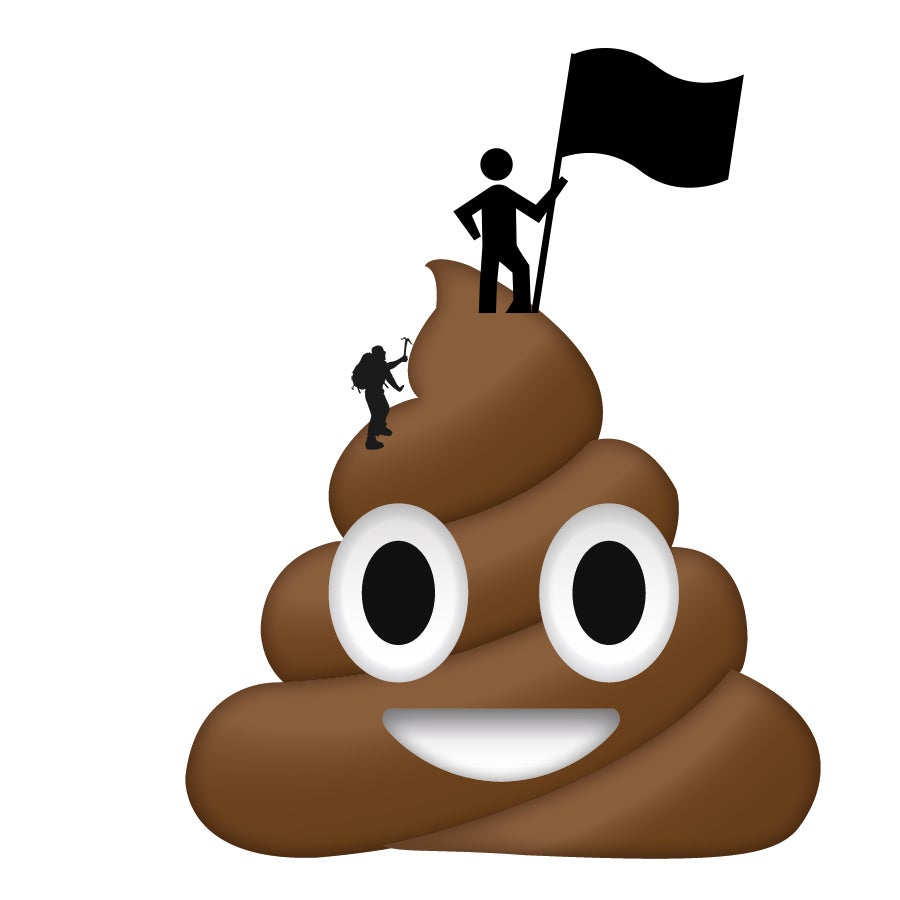Think that ice-blue water pouring out of a beautiful mountain glacier is safe to drink untreated? Think again. It could be full of decades-old poop from mountaineers.
Poop, and how you avoid drinking water contaminated by it, have been in the news recently. First, Slate published , incorrectly suggesting that readers don’t need to filter their water in the backcountry. I pointed out the errors in it. After that, Andrew Skurka revealed to the world that drinking potentially poop-filled water is one of his many hobbies, then offered tips on how to do it best. (Eww.)
Those stories prompted one of our readers to send me a study conducted on Denali. The research suggests fecal bacteria can survive inside glaciers for much longer than previously thought, flowing downhill with the ice, and potentially infecting water sources tens of miles away.
You see, until recently, it was common practice for climbers on Alaska’s tallest mountain to simply hurl their poop into deep crevasses, where it was assumed freeze-thaw cycles and the grinding action of the flowing ice would make it disappear. Climbing that mountain along its most popular West Buttress route is a two-week endeavor, and it’s estimated that, since 1970, 34,000 climbers have deposited 66 metric tons of poop in the mountain’s Kahlitna Glacier.
Turns out that being buried in ice actually preserves poop and fecal bacteria. D’oh.
“Everything we’ve got points toward the poop and bacteria lasting indefinitely when it’s buried in the ice,” explains Michael Loso, a National Park Service geologist who helped put together . Rather than destroying the poop, the chilly but relatively constant temperatures of deep-glacier ice actually help shield poop and its bacteria from the forces that would destroy it quickly at the surface—UV radiation, wind, and rain. And being deposited in such large volumes exacerbates bacteria growth in the fertile feeding ground.
Loso’s team tracked poop moving downstream in the glacial flow, calculating that historic deposits left high on the mountain should emerge on the surface in about 70 years, after traveling 17 miles in the flowing ice. In fact, tests of streams flowing from the glacial melt already show trace amounts of fecal bacteria that likely came from human climbers far up the mountain. Loso is quick to point out that while bacteria like E. coli and fecal enterococci are now showing up in local water sources, they’re only doing so in trace amounts that don’t pose a risk to human health—or at least not yet. The study also points out that this may change when large deposits of poop start reaching the surface decades from now. Because climate change is speeding the pace at which glaciers are melting, the study found it could speed up the process by which old mountaineer poop emerges from glaciers.
Curious if this fate awaited other glaciated mountains, I called Loso to find out. He explained that Denali’s West Buttress route is relatively unique, in that climbers spend most of their time in its accumulation zone, where snowfall is adding to the glacier’s mass. As more snow falls, more glacier forms. If there’s poop in that snow, or in the crevasses, it becomes part of the glacier, and is preserved. According to Loso, most other popular glacial mountains see climbers deposit their waste in ablation zones, where the glaciers are losing mass. There, the poop is simply washed away or destroyed by extreme mountain weather. Although the seasonal surface pollution created by all that poop does make melted snow on popular routes unsafe for climbers to drink untreated.
I explained the premise of Slate’s article to Loso, and asked him if his work could be extrapolated to show that human poop could be infecting wilderness water sources elsewhere. “Absolutely,” he says, going on to explain that any time poop is deposited inside snow or ice so that it stays there beyond the seasonal freeze-thaw cycle, “it can persist for a long time.” I asked him if there was a limit for how long poop could remain infectious while preserved in ice, and he explained that if there was one, he hasn’t yet found it.
So the bottom line is that just because a water source was previously frozen does not mean it is inherently safe to drink. In fact, Loso has found snow and ice are capable of preserving poop and fecal bacteria “indefinitely,” which means that you need to consider the provenance of your melt water carefully. Has a human ever pooped on that mountain? If the answer could be yes, then you should probably filter your damn drinking water.


